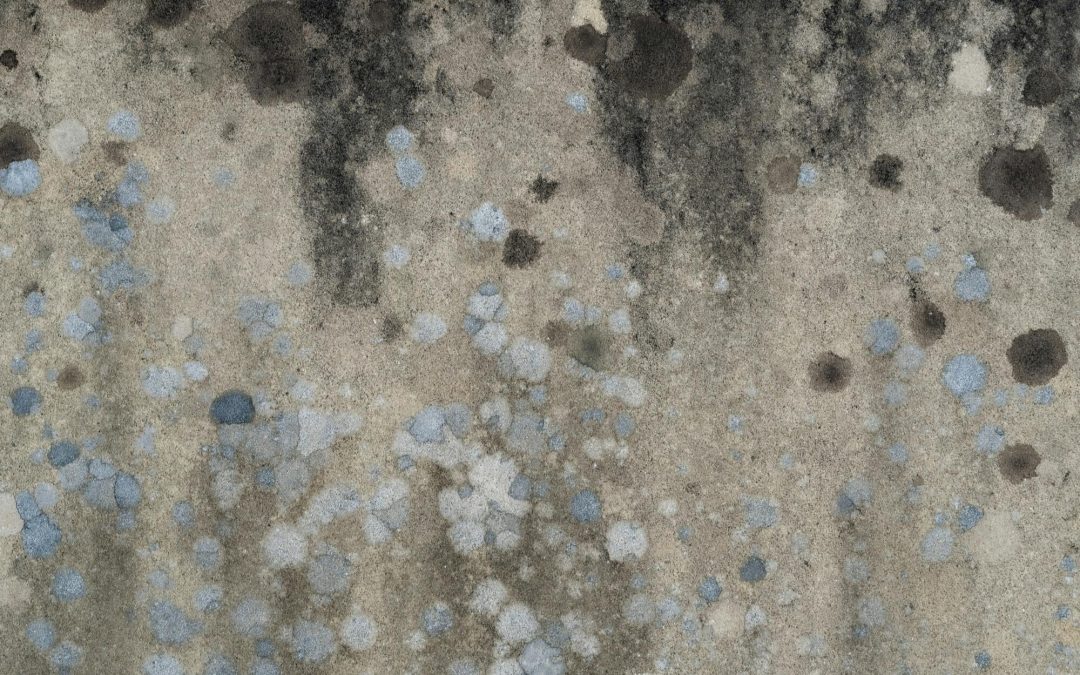Imagine you notice a strange odor in your home one day that you can’t seem to pinpoint. Over the next few months, you begin to develop unfamiliar health issues like a sore throat and chronic cough.
Mold can hide in places you wouldn’t expect, causing damage before you even realize it’s there. Knowing how to detect mold in your house helps protect both your home and your health from long-term issues. Below, we’ll explore some of the most common signs to keep an eye out for.
Signs of Visible Mold
Mold can appear in different colors and textures, making it easy to miss if you’re not paying close attention. Common signs of household mold include black/green or white patches on walls/ceilings or furniture.
Some types have a fuzzy or slimy texture, while others look like harmless stains. Bathrooms and kitchens are frequent trouble spots due to moisture buildup. Mold often spreads in hidden areas, but some of the most common places to check include:
- The corners of ceilings and walls
- Under sinks and around plumbing fixtures
- Inside air ducts and HVAC systems
- On windowsills and near condensation-prone areas
- Behind wallpaper, drywall, or flooring
Ignoring visible mold can lead to bigger issues, so it’s best to take action as soon as you spot it.
Unexplained Musty Odors
A persistent musty smell is one of the biggest red flags for mold growth in a home. This odor often lingers in areas with poor ventilation or high humidity, even when there’s no visible mold.
It’s often strongest behind walls, where moisture can accumulate without being noticed. If a room smells damp even after cleaning, mold could be hiding somewhere nearby. Pay attention to whether the smell gets worse after it rains, as leaks can create the perfect environment for mold to spread.
Home mold detection can be tricky when the problem is out of sight. A strong odor without an obvious source may mean the mold is growing inside walls or even in the insulation. In these cases, a deeper investigation through testing is necessary to locate and eliminate the issue.
Increased Allergy Symptoms
If you or someone in your household starts experiencing allergy symptoms indoors, mold could be the culprit. Mold spores can irritate the respiratory system, leading to coughing and nasal congestion.
People with asthma or weakened immune systems are especially sensitive to these airborne particles. Some key signs that mold might be affecting your health include:
- Frequent sneezing or itchy eyes indoors
- Worsening asthma symptoms with no clear trigger
- Sinus headaches that improve outside the home
- Skin irritation or unexplained rashes
- Chronic fatigue or difficulty breathing at night
Tracking when and where symptoms appear can help determine whether mold is the cause.
Water Damage and Stains
Water damage is one of the biggest warning signs of mold, even if it happened months ago. Stains on ceilings or walls often mean moisture has seeped in, creating the perfect conditions for mold to thrive.
Leaks from plumbing or appliances can leave behind yellow or brown discoloration. Mold inspection techniques can help identify problem areas that aren’t immediately obvious. Using a moisture meter or infrared camera can reveal dampness inside walls, while professionals can check air samples for hidden spores.
Humidity and Condensation Issues
Excess moisture in the air encourages mold growth, especially in homes with poor ventilation. Bathrooms and laundry rooms often develop condensation on windows and walls. If these droplets don’t dry quickly, they can soak into surfaces and create mold-friendly conditions.
High humidity levels can also accelerate mold growth in furniture and fabrics. If a home feels damp or muggy, it may be at risk for mold. A few ways to prevent mold growth in humid areas include:
- Using a dehumidifier to control indoor moisture
- Running exhaust fans while cooking or showering
- Keeping windows open to improve air circulation
- Fixing leaks or water damage as soon as possible
- Insulating cold surfaces to reduce condensation buildup
Managing humidity levels makes a significant difference in preventing mold problems.
Why It Matters
Mold isn’t just an eyesore, as it can cause serious problems for both your health and your home. Ignoring it can lead to long-term damage that becomes costly to fix. Below are the most important reasons to prioritize mold detection.
Health Risks From Mold Exposure
Mold exposure can trigger a range of health problems, especially for people with allergies or asthma. Symptoms often start with sneezing or itchy eyes but can become more severe over time. Common health issues linked to mold exposure are:
- Persistent coughing or throat irritation
- Sinus congestion and frequent headaches
- Worsening asthma or shortness of breath
Ignoring these symptoms can lead to ongoing discomfort and potential long-term health concerns.
Structural Damage to Your Home
Mold doesn’t just stay on the surface. It can break down materials over time, causing serious structural damage.
Mold also weakens drywall and spreads into insulation, making it difficult to contain. If left unchecked, it can compromise support beams or flooring, leading to costly repairs.
Long-Term Cost of Mold Removal
Mold removal can be expensive, especially when the problem is widespread or deeply embedded in walls and flooring. Professional remediation may involve tearing out damaged materials and repairing leaks to prevent future issues. Consider the following factors that influence mold removal:
- The extent of the mold growth
- The type of mold present
- The need for structural repairs
Taking action early can help you avoid the financial strain of major mold remediation projects.
Understand How to Detect Mold in Your House
Paying attention to warning signs and taking action helps protect both your health and your home. The info in our guide will help you understand how to detect mold in your house and avoid issues in the future.
Elite Mold Services specializes in certified mold inspections, air quality testing, and moisture assessments across Central Florida. With over 15 years of experience, we deliver fast, reliable results, often within 24 hours. You can schedule a consultation with us today to learn more about how we can help.

